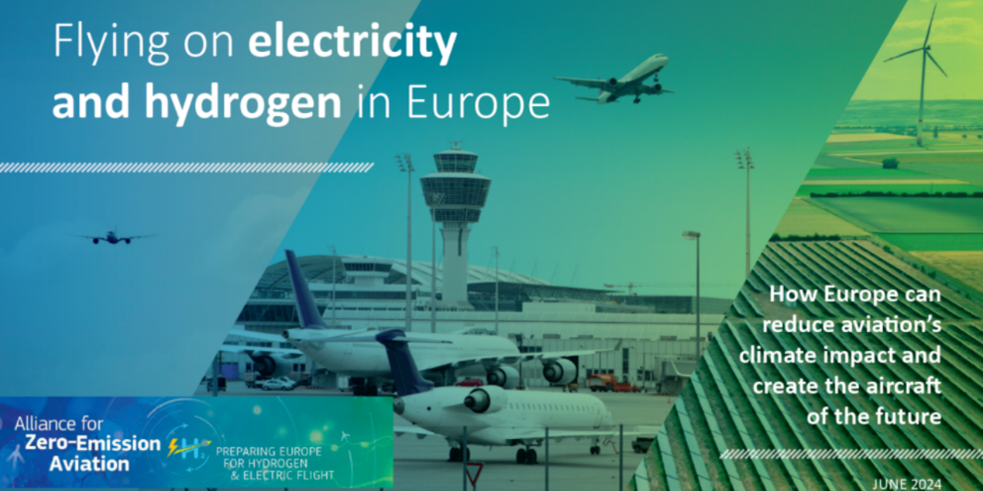At the aerospace exhibition ILA Berlin, the Alliance for Zero-Emission Aviation (AZEA) launched its vision on enabling hydrogen and electricity-powered flights in Europe. Through this vision, published in a report, the aviation ecosystem shows that it is determined to become more climate-friendly and to invest in the technologies of the future.
The vision sets the ambitious objective of having 36 to 68% of intra-EU flights operated by such hydrogen- and electricity-powered aircrafts by 2050 and describes how they would progressively enter and expand in the market. According to the Alliance, the total renewable and low carbon energy required to operate those flights in 2050 (not including the energy required for producing Sustainable Aviation Fuel) is estimated to 78 to 198 TWh/y of electricity used either for the propulsion of electric aircraft or for the production of 1,2 to 2,9 Mt/y hydrogen required by hydrogen aircraft, which would correspond to 1.1 to 2.8% of the gross electricity generation foreseen by 2050. The Alliance estimates that aircrafts powered by hydrogen or electricity could reduce aviation CO2 emissions on intra-EU routes by 12 to 31% in 2050.
AZEA was launched by the Commission as a voluntary initiative of private and public partners who aim to prepare the entry into commercial service of hydrogen-powered and electric aircrafts. The Alliance gathers representatives from aircraft manufacturers, airlines, airports, energy companies and fuel providers, standardisation and certification agencies, passenger and environment interest groups, and regulators.
Already today, manufacturers across Europe are developing aircrafts or powertrains using electricity and hydrogen as novel energy sources. To enable the operation and use of these technological innovations, joint action needs to be taken. The AZEA Vision illustrates the various challenges to make electric and hydrogen flight a reality, and the need for collaboration across the aviation ecosystem. It identifies barriers and challenges to be addressed through coherent actions by the members of the ecosystem.
The AZEA Vision builds upon the ongoing work undertaken by AZEA’s six Working Groups analysing the entry-into-service of novel aircraft, their corresponding energy needs and supply, the adaptation of airport infrastructure, regulatory requirements, integration into air traffic as well as incentives to accelerate the transition.
The establishment of this common Vision demonstrates the capacity of the Alliance members to work together and their commitment to make the energy shift towards electricity and hydrogen a reality in aviation.
AZEA was launched by the Commission as a voluntary initiative of private and public partners who aim to prepare the entry into commercial service of hydrogen-powered and electric aircrafts. The Alliance gathers representatives from aircraft manufacturers, airlines, airports, energy companies and fuel providers, standardisation and certification agencies, passenger and environment interest groups, and regulators.
Source: European Commission (Defence Industry and Space) | Newsroom | Latest News (https://shorturl.at/0OtYK)
